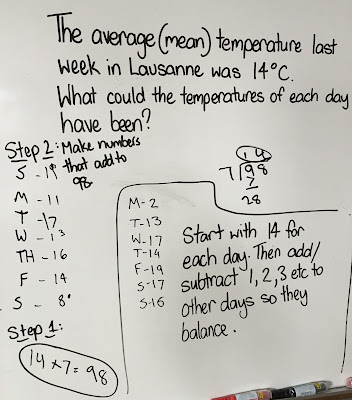We began our assessment into data handling by looking again at our central idea and the questions we created that we felt we wanted to find out. We discussed which we felt we had gained a good understanding of and those we hadn't and why.
Each of us then shared something we felt we had improved at or felt proud of during our unit. It was fascinating to hear all the different ideas shared and the positive sense of pride in our room. With this positivity of our new understandings and learning, we were set to begin our open-ended activity.
The first part:
Being open-ended, students were able to take their learning as far as they could. Some focused on one set of data provided whilst most analysed both sets of data.
The instruction was simply to analyse as much as you can about the sets of data and to try to explain what that actually meant.
Some examples:
It's also interesting to assess how children arrange their thinking in these sort of activities as it can give an insight into their ways of thinking - big picture, logically-sequenced etc.
The Second Part:
The second part helped children to think about the suitability of graphs for different types of data. Again, it was an open choice.
Students chose to create pie graphs, line graphs or column graphs and explained why they felt they were a suitable graph choice.
They really enjoyed being given the freedom to choose the types of graphs they created as well as the set/s of data they wanted to convey in graph form. It also served as an important assessment to see if each child could determine a suitable graph or struggled with that.
Early Finisher Challenges:
For early finishers, two open-ended questions related to data handling were given. They were given the choice of which to try to solve:
Students who wanted to, were given the opportunity to share with us strategies they created to solve the questions. They were encouraged to share both successful strategies and importantly, to share strategies they had tried out but didn't help.
By not sharing answers we had, the message hopefully being received was that the strategies and thinking of strategies is what we should be valuing as mathematicians and that correct answers are merely a positive outcome of that.
Some truly amazing successful and unhelpful strategies were shared!
Giving children open-ended assessments rather than traditional maths tests provides them with a rich experience to do what mathematicians actually do and more importantly allows each child to feel successful in what they achieve as mathematicians.










No comments:
Post a Comment
What do you think? ...........